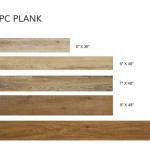Warm Kitchen Flooring Options: A Comprehensive Guide
Kitchen flooring plays a significant role in the overall comfort and functionality of a home. Beyond aesthetics and durability, the warmth of the flooring material underfoot contributes significantly to the kitchen’s livability, especially during colder months. Selecting a flooring option that retains or readily radiates heat is an investment in long-term comfort and can contribute to energy efficiency. This article explores various warm kitchen flooring options, highlighting their characteristics, benefits, and considerations for making an informed decision.
Understanding Thermal Conductivity and Heat Retention
Before delving into specific flooring materials, it's crucial to understand the concepts of thermal conductivity and heat retention. Thermal conductivity refers to a material's ability to conduct heat. Materials with high thermal conductivity, such as metal, quickly transfer heat, feeling cold to the touch unless they are at a temperature similar to the body. Conversely, materials with low thermal conductivity, such as wood or carpet, resist heat transfer, feeling warmer even at room temperature.
Heat retention, also known as thermal mass, refers to a material's ability to store heat. Materials with high thermal mass, like concrete or stone, can absorb and store significant amounts of heat, releasing it slowly over time. This characteristic can be particularly beneficial in conjunction with radiant heating systems.
The perceived warmth of a flooring material is a combination of both its thermal conductivity and its ability to retain heat. An ideal warm kitchen flooring option will have low thermal conductivity to minimize heat loss from the body and may also possess good heat retention properties, especially when paired with a radiant heating system.
Popular Flooring Options and Their Warmth Factor
Several flooring materials are known for their inherent warmth or their suitability for use with radiant heating systems. The following sections evaluate some of the most popular choices, considering their thermal properties, durability, maintenance requirements, and cost.
1. Cork Flooring
Cork flooring is a naturally warm and resilient option derived from the bark of cork oak trees. Its cellular structure contains millions of air-filled pockets, providing excellent insulation and a comfortable surface underfoot. Cork's low thermal conductivity means it doesn't readily draw heat away from the body, making it feel warmer than many other hard flooring options.
Beyond its thermal properties, cork is also naturally anti-microbial and hypoallergenic, resisting mold and mildew growth. It offers some sound dampening qualities, reducing noise levels in the kitchen. Cork flooring is relatively easy to maintain, requiring regular sweeping or vacuuming and occasional damp mopping. However, it is somewhat susceptible to scratches and dents, requiring careful maintenance and the application of a durable sealant.
The cost of cork flooring can vary depending on the style, thickness, and finish, but it generally falls in the mid-range compared to other flooring materials. It’s a sustainable choice, as the bark regenerates, allowing for harvesting without harming the tree.
2. Vinyl Flooring (Luxury Vinyl Plank/Tile)
Vinyl flooring, particularly luxury vinyl plank (LVP) and luxury vinyl tile (LVT), has gained significant popularity in recent years due to its durability, water resistance, and aesthetic versatility. While vinyl itself is not inherently warm, it is less conductive than materials like tile or stone, resulting in a warmer feel underfoot.
Many high-quality LVP and LVT options feature a thicker construction with an added layer of cushioning, further enhancing their comfort and warmth. Additionally, vinyl flooring is compatible with radiant heating systems, allowing for a uniformly warm surface throughout the kitchen.
Vinyl flooring is relatively easy to install and maintain, requiring regular sweeping and occasional mopping. It is also highly resistant to scratches, stains, and water damage, making it a practical choice for the kitchen environment. Costs vary depending on the quality and style, but LVP and LVT generally offer a cost-effective alternative to natural stone or hardwood.
3. Wood Flooring
Wood flooring, particularly solid hardwood or engineered hardwood, offers a classic and aesthetically pleasing flooring option that provides natural warmth. Wood's inherent low thermal conductivity makes it comfortable underfoot, especially compared to tile or stone. The species of wood can influence its warmth, with softer woods like pine feeling slightly warmer than denser hardwoods like oak.
Engineered hardwood, constructed with multiple layers of wood veneer bonded to a core, offers greater dimensional stability than solid hardwood, making it a more suitable option for kitchens where moisture exposure is a concern. Both solid and engineered hardwood can be refinished multiple times, extending their lifespan and allowing for customization.
While wood flooring is generally comfortable, it is more susceptible to moisture damage than other materials like vinyl or tile. Proper sealing and regular maintenance are essential to prevent warping or staining. It is generally more expensive and requires professional installation to ensure its longevity.
4. Linoleum Flooring
Linoleum is a natural and sustainable flooring option made from renewable materials such as linseed oil, rosin, wood flour, and pigments. Similar to cork, linoleum's natural composition provides inherent warmth and comfort underfoot. It is also naturally anti-microbial and hypoallergenic.
Linoleum is a durable and resilient flooring option that can withstand heavy foot traffic. It is also relatively easy to maintain, requiring regular sweeping or vacuuming and occasional damp mopping. Although relatively durable, it is susceptible to dents and scratches, and direct sunlight may lead to fading.
Linoleum is available in various colors and patterns, allowing for creative design possibilities. Its cost is comparable to mid-range vinyl flooring options. The material is considered an environmentally friendly choice due to its use of renewable resources and its biodegradability.
5. Radiant Heating Systems Beneath Tile or Stone
While tile and stone are known for their durability and aesthetic appeal, they are also notoriously cold underfoot due to their high thermal conductivity. However, these materials can be transformed into comfortable flooring options when paired with a radiant heating system.
Radiant heating systems consist of electric cables or hydronic tubes embedded in the subfloor beneath the tile or stone. These systems radiate heat upwards, warming the flooring surface and creating a comfortable and evenly heated environment. Tile and stone possess high thermal mass, meaning they effectively store and radiate heat, making them an ideal pairing with radiant heating systems.
While the initial investment for radiant heating can be significant, it offers numerous benefits, including improved energy efficiency, even heat distribution, and enhanced comfort. The cost of operation depends on factors such as energy rates and the size of the heated area. This solution addresses the coldness issue, making stone and tile viable options for those who appreciate their other qualities.
Factors to Consider When Choosing Warm Kitchen Flooring
Selecting the ideal warm kitchen flooring option involves careful consideration of several factors beyond just thermal properties. These factors include budget, lifestyle, aesthetic preferences, and the overall design of the kitchen.
1. Budget
The cost of flooring materials can vary significantly, ranging from budget-friendly vinyl options to more expensive hardwood or stone. It is important to establish a budget upfront and explore options that fall within that range. Bear in mind that the price of installation, which can vary significantly depending on the material and the complexity of the project, must be considered.
2. Lifestyle
Lifestyle factors, such as the presence of children or pets, can influence the choice of flooring material. Durable and stain-resistant options like vinyl or tile may be more suitable for households with high foot traffic or frequent spills. If maintaining a pristine finish is a priority, consider materials requiring less upkeep.
3. Aesthetics
The flooring should complement the overall aesthetic of the kitchen. Consider the color palette, cabinetry style, and lighting when selecting a flooring material. Warm-toned woods or patterned vinyl can add warmth and character, while lighter-colored options can create a brighter and more spacious feel.
4. Moisture Resistance
The kitchen is a moisture-prone environment, making water resistance a crucial factor to consider. Options like vinyl, tile, and properly sealed linoleum are highly resistant to water damage, while wood flooring requires more careful maintenance to prevent warping or staining. Choose a material with the necessary moisture resistance level for the kitchen.
5. Maintenance
Different flooring materials have different maintenance requirements. Some require regular sweeping and mopping, while others may require periodic sealing or refinishing. Consider the time and effort required to maintain the flooring and choose an option that fits the lifestyle and preferences.
Ultimately, the optimal warm kitchen flooring option is one that balances thermal comfort, durability, aesthetics, and budget. By carefully considering these factors and weighing the pros and cons of different materials, homeowners can make an informed decision that enhances the comfort and functionality of their kitchen for years to come.

Warm Kitchen Flooring Option Poulin Design Center

10 Kitchen Flooring Trends 2024 Blog Quorn Stone

Best Kitchen Flooring Floor Ideas For Your Home

The Warm Kitchen Trends In Tile And Stone Country Floors Of America Llc

Before And After 3 Kitchens That Get Warmth From Wood Floors

30 Kitchen Flooring Options And Design Ideas

45 Fantastic Kitchen Floor Ideas And Designs Renoguide N Renovation Inspiration

2024 Kitchen Flooring Trends 20 Ideas To Update Your Style Inc

17 Best Kitchen Floor Tile Ideas 2024 Small

These 25 Kitchen Floor Ideas Are Tasteful And Practical








